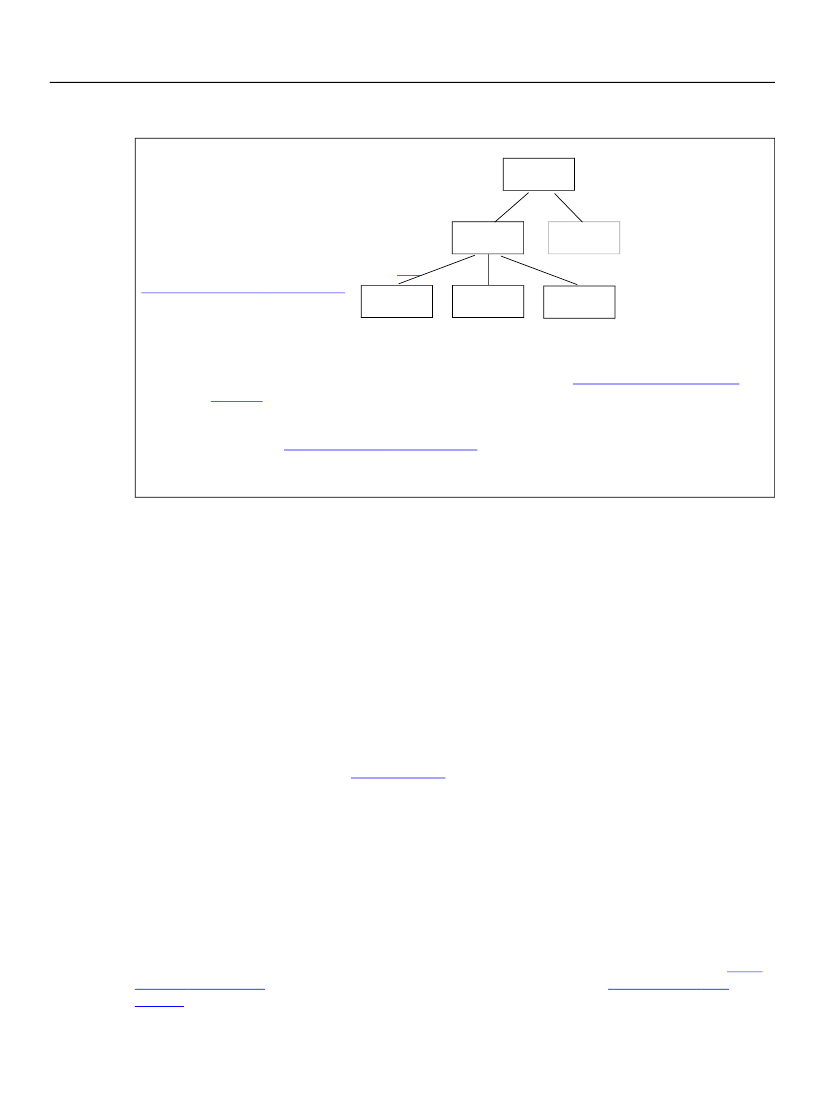
XFA Specification
Chapter 2, Template Features for Designing Static Forms
Form Structural Building Blocks
26
Types of structural building blocks in an XFA template
Container element
is a type of XFA template
element that specifies either of the following: (a)
content elements and the form-related aspects of
navigating to, displaying and processing those
elements; or (b) other container elements and the
form-related aspects of navigating to, displaying
and processing those container elements.
See
“Container Elements” on page 26.
Content
Container
Container
Container
UI
Caption
Content element
is a type of XFA template element that houses datatyped pcdata (text) or
graphic elements (lines and images). Such pcdata or graphic elements may be defined as
default data or un-changeable data in the content element.
See “Content Elements” on
page 31.
UI element
is a type of XFA template element that describes how data should be presented to
a form user.
See “User Interface” on page 32.
Caption element
provides static text that labels a container.
Container Elements
The term
container element
refers to an element that houses content and the form-related aspects of
dealing with its content, such as the following:
●
Content or the potential for content, including fixed or variable content. Content includes text, images,
and basic line-drawings. Fixed content does not change through the life of the container, while variable
content may.
Caption for the container
Formatting and appearance such as the a border around the container, text formatting and
localization, and barcode formatting
Accessibility, such as traversal order between containers and speech order for the text associated with
a container
User interaction, as described in
“User Interface”
Calculations that consider the content of this and other containers
Validations used to qualify data associated with the content element
Other interactions, such as form or keyboard events and web service interactions
●
●
●
●
●
●
●
Containers Associated with Variable Content
Field
A
field
element is the workhorse of a template and represents a data-entry region. A user typically
interacts with
field
elements by providing data input. Fields provide a pluggable user interface (“User
Interface” on page 32)
and support for a broad variety of content data-typing (“Content
page 38).